Cube Travel Panniers review
Roomy, practical panniers for urban errands and commuting.
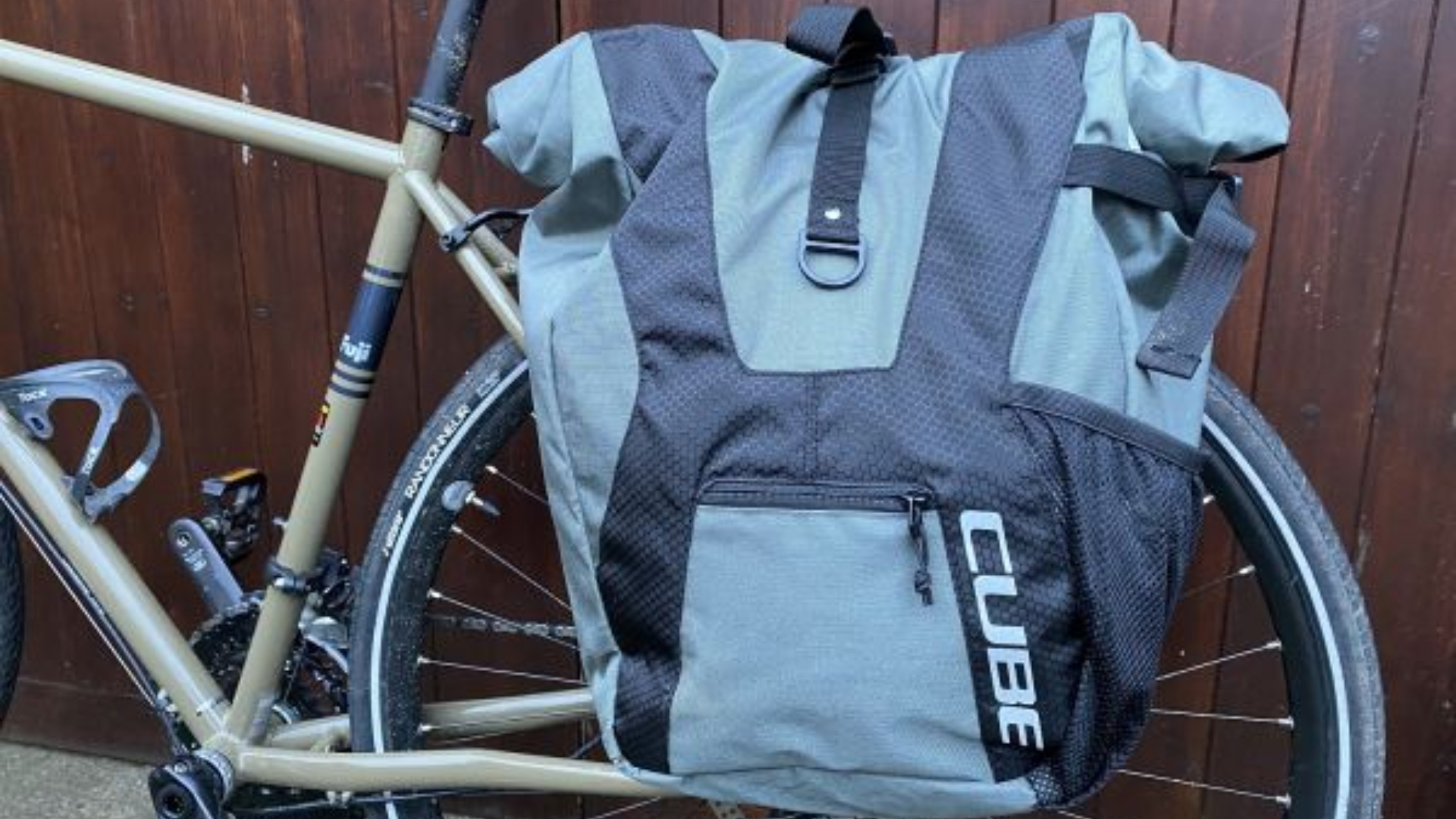
A functional set of panniers that will suit commuters and those relying on the bike more than the car. They lack a little in the durability and weatherproofing stakes, but they more than make-up for this with loads of practical and convenient features.
-
+
Plenty of internal and external pockets
-
+
Tool-free adjustment
-
+
Convert to shoulder bag easily with included strap
-
-
Not waterproof
-
-
Not as robust as some
-
-
Niggle with pocket size opening
- -
You can trust Cycling Weekly.
If you are on the look out for a pair of panniers to mount on a commuting or town bike, Cube’s Travel panniers are definitely worth considering. Tool-free adjustment and heaps of considered details make them versatile, both on and off the bike. They will appeal to anyone wanting hassle-free kit without the need for extra purchases to make them fully functional; shoulder straps and rain-covers are included.
Construction
The 100% polyester bags feature a roll-top closure. Two detachable, adjustable shoulder straps are included. Both bags have a zipped pouch on the underside containing a high-vis rain cover.
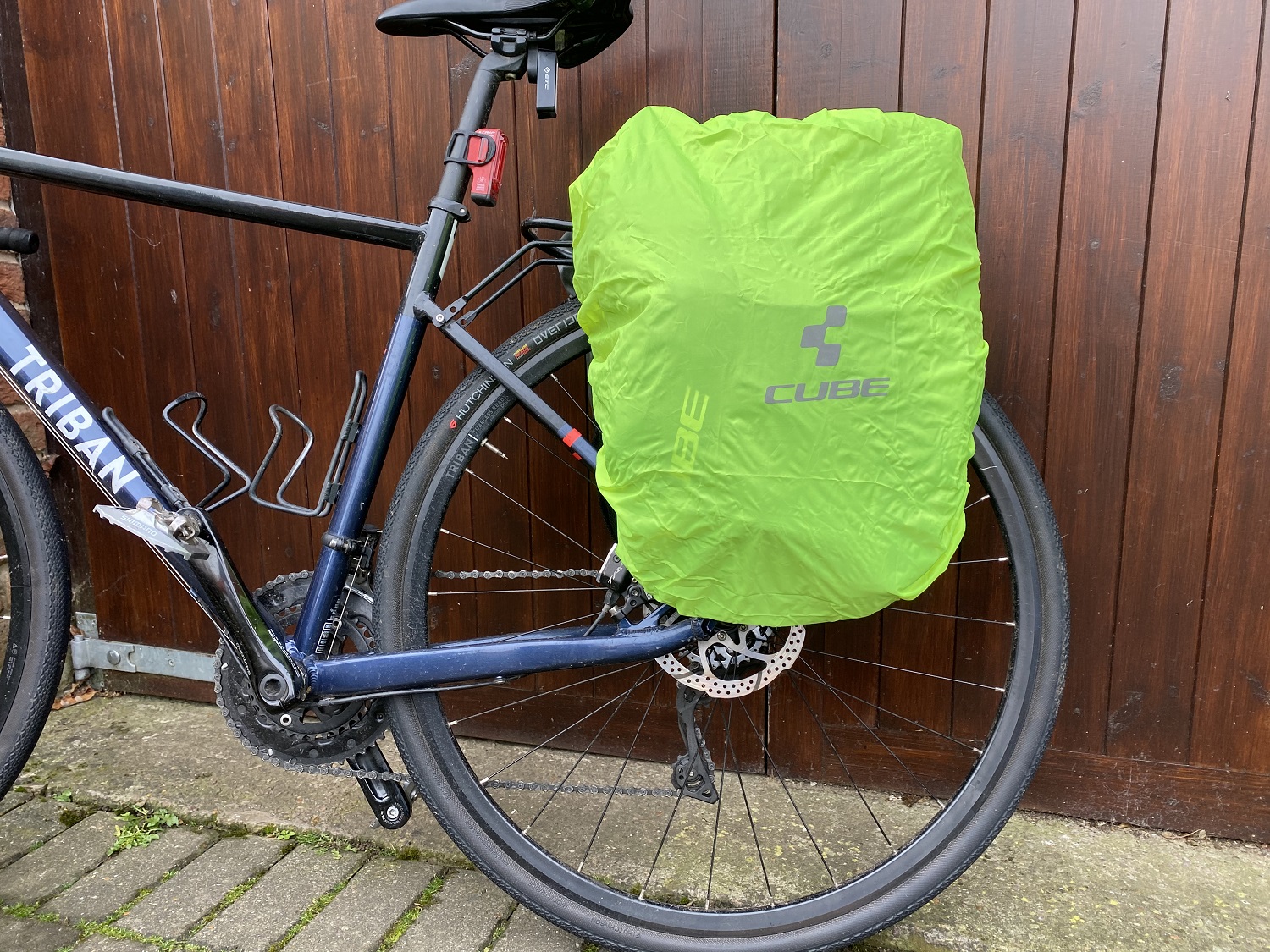
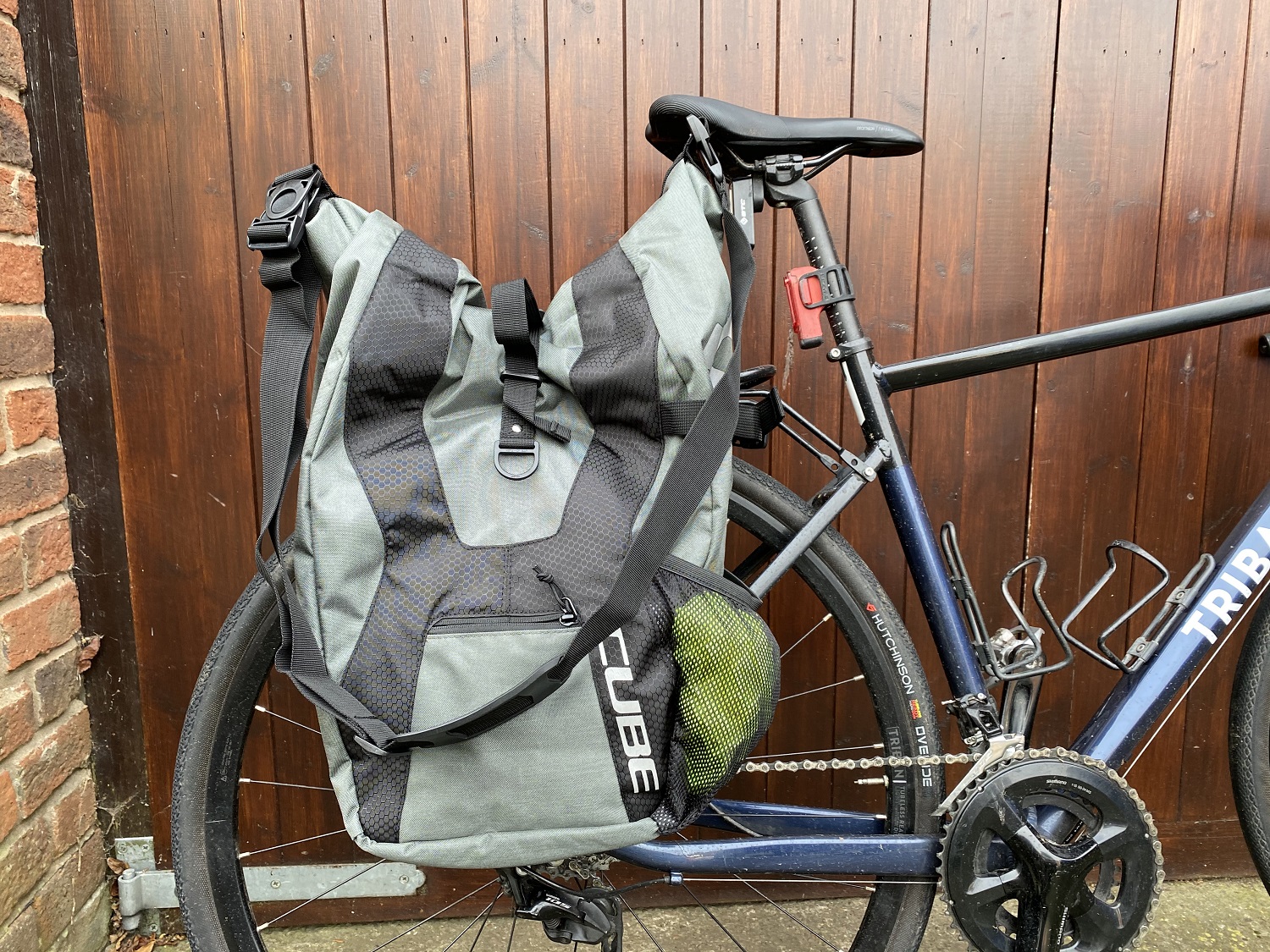
Two mounting brackets attach the panniers to a rack. They can be moved, without the use of any tools, to any one of seven positions, making them compatible with most racks.
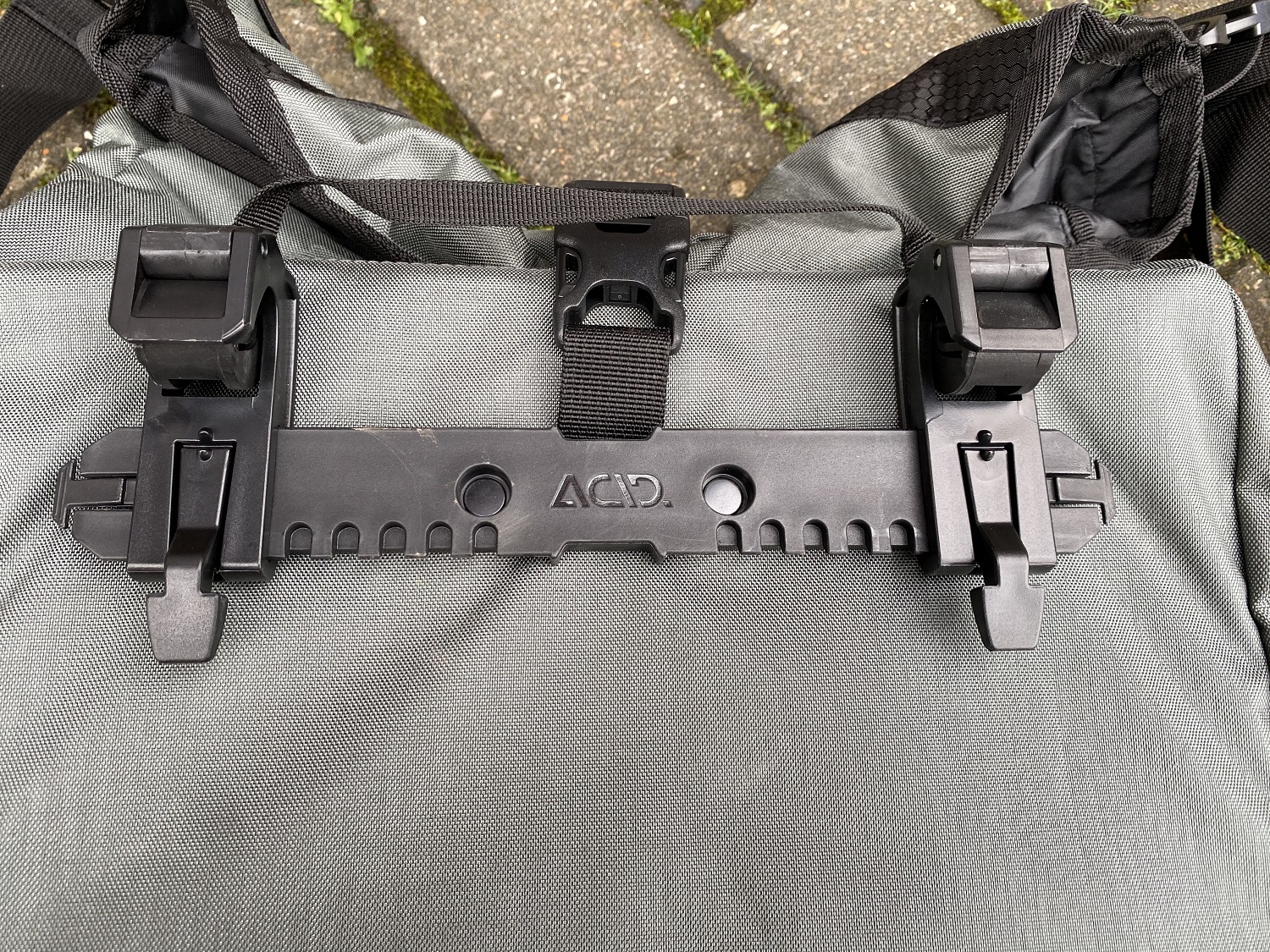
The mounting brackets themselves are quick release; lift and release the carry handle to attach and secure them to the rail.
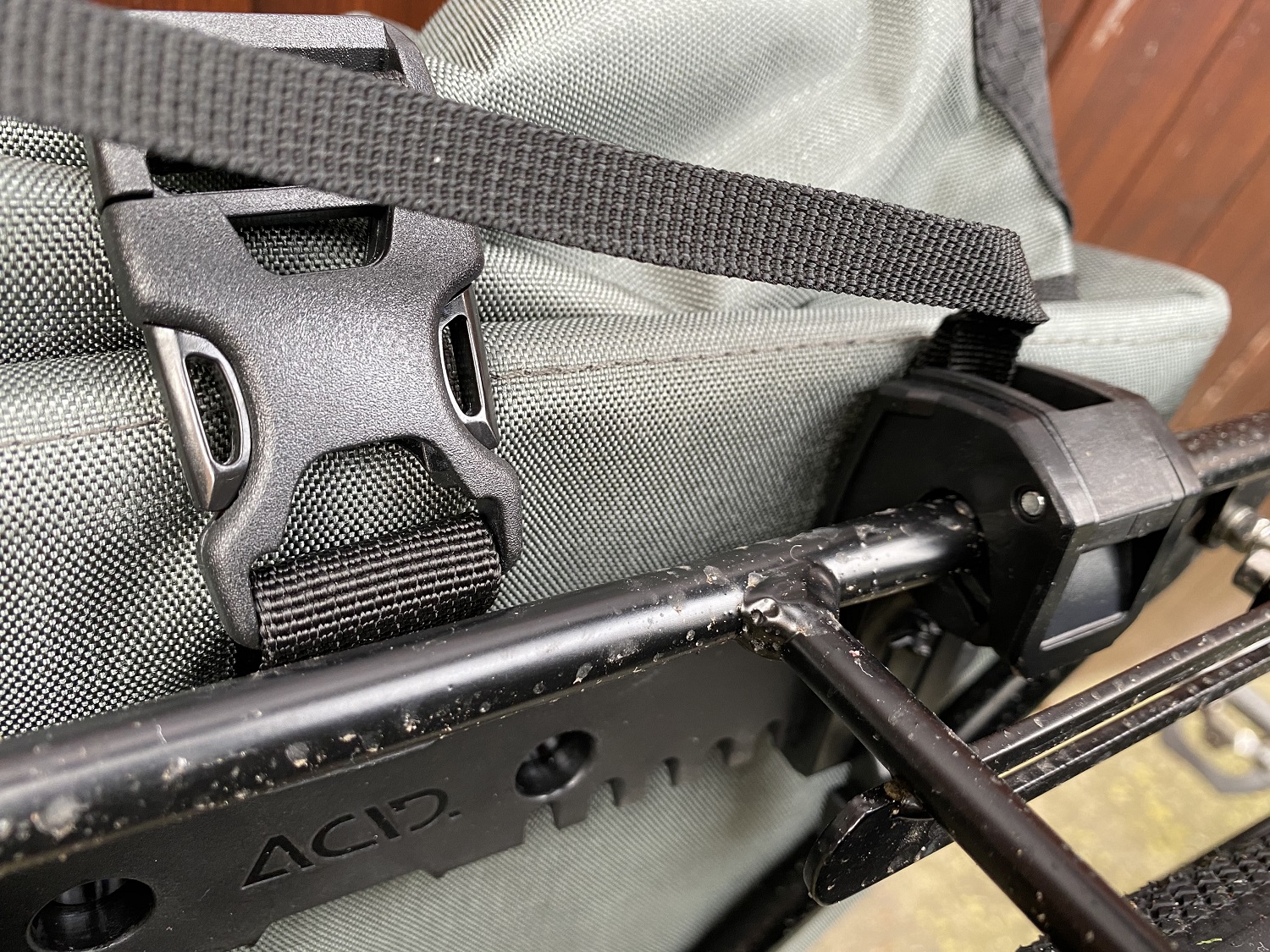
The third attachment point, to hold the panniers flush to the rack, is a dial mounted arm. This can be positioned anywhere along a rail, at any angle, without the need for a tool.
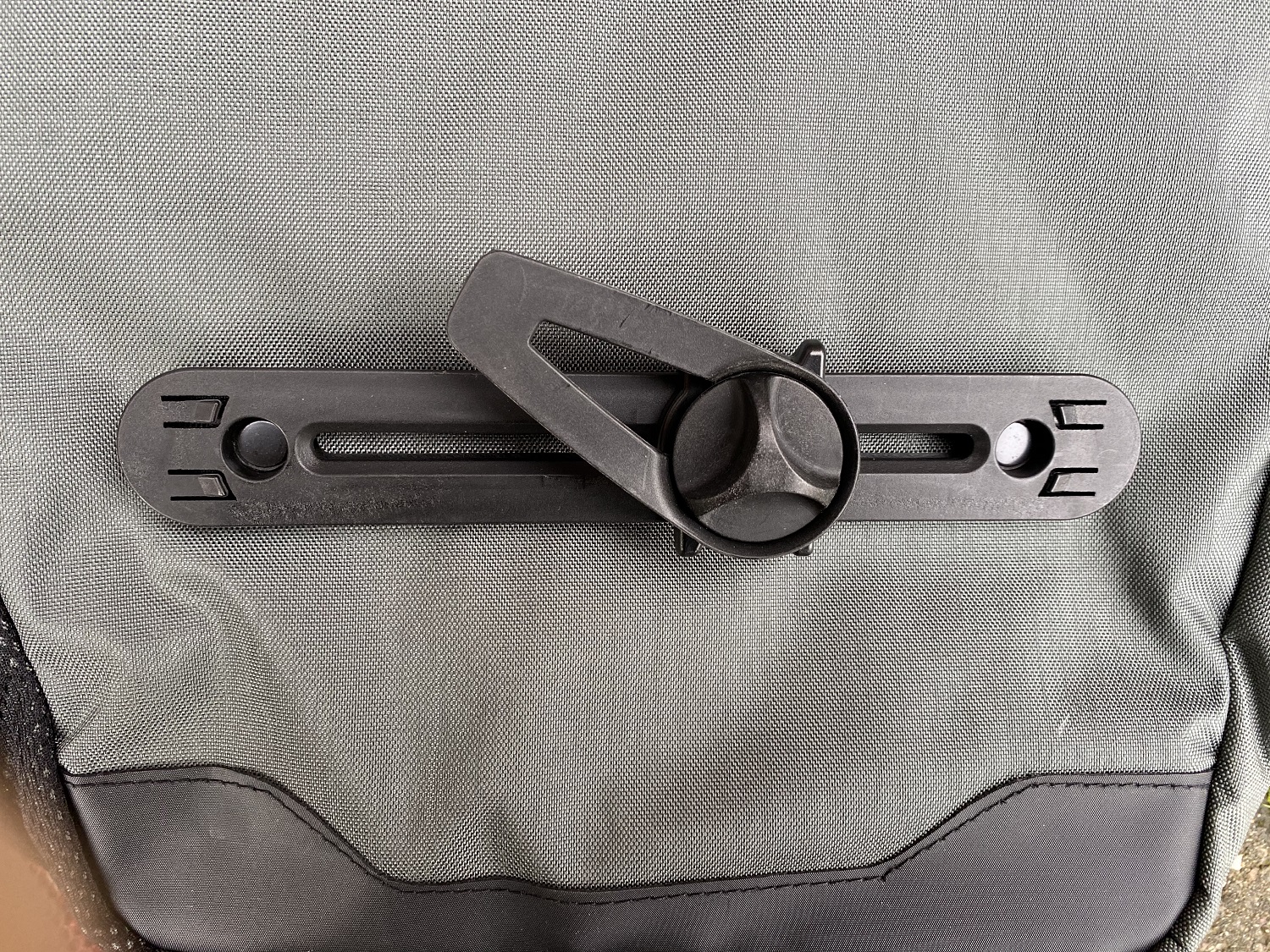
Reinforced back plates offer some degree of protection for contents, and the lower-backside of the panniers have an extra strip material sewn to them for durability.
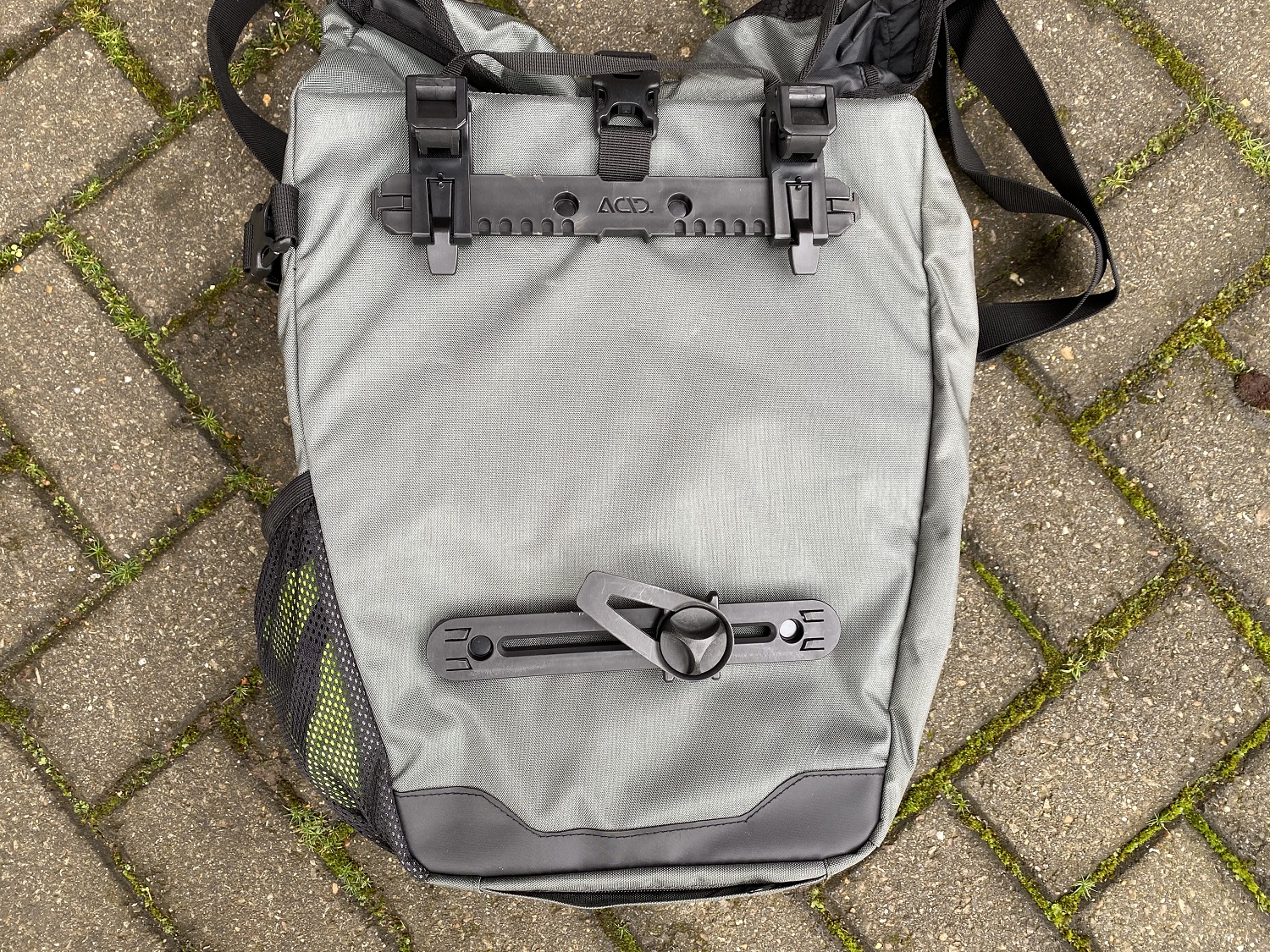
Cube has added a zipped pocket and an open top pouch, both internally and externally.

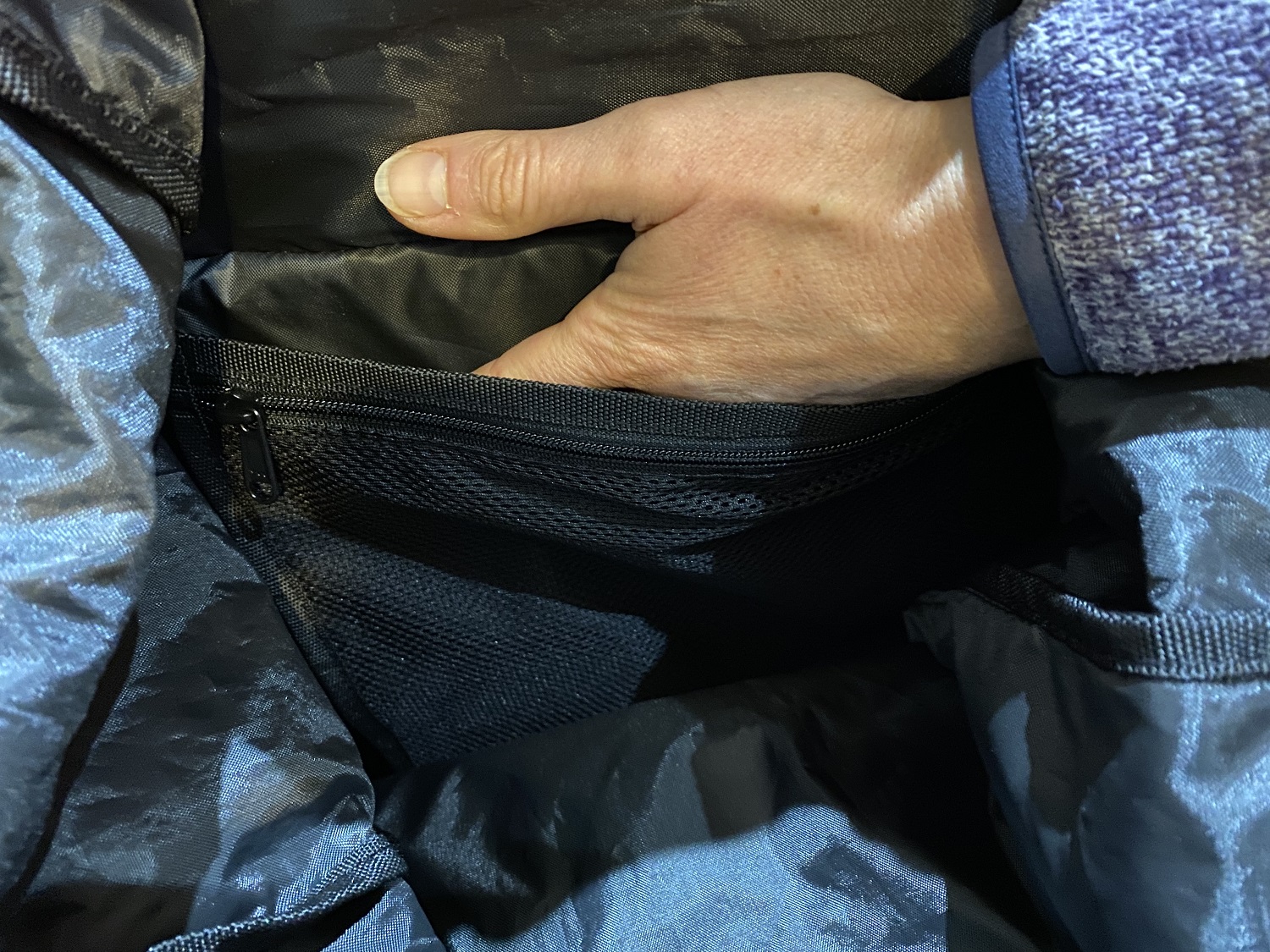
Cube Travel Panniers - the ride
Unlike many panniers targeted at commuters and leisure riders, the Cube Travel Panniers come as a pair. They have a generous combined capacity of 40 litres, with each pannier measuring approximately 42 x 30 x 18 cm. The pair, with straps, tip the scales at 1600g.
They certainly aren’t weighty for their capacity, and I found the dimensions to be practical; they aren’t so deep that you can’t see right into them. I never felt like I was fishing around aimlessly at the bottom, hoping to find contents via touch.
The lightweight nature does come at a cost; the panniers have a rather flimsy feel about them, especially in comparison to something like Altura’s Thunderstorm. This isn’t all bad though; off the bike they feel really compliant and comfortable when carried over your shoulder. In addition to this, the fabric moulds to accommodate contents much more easily than a stiffer material does, so packing them out is a doddle.
The ratchet style adjustment of the mounting brackets is reassuringly stiff; there’s no way they are budging once set in position. I didn’t have issues fitting them on any of the racks I’ve been testing, or any of my own personal racks. The arm’s infinite adjustment is a real plus; so many racks have different lateral set-ups that even a degree or two can offer a better fit.
Cube doesn’t offer any kind of adaptor for varying rail sizes but I haven’t had an issue here. I didn't have to 'manually' close the bracket around the rack rail on some racks; it just needed a little coercion to fully close. I’ve done a lot of road riding and haven’t noted rattling or movement. However, I haven’t used them off-road.
The roll-top closure is straightforward enough to use. The buckle is what I’d call, ‘all-weather friendly’; it’s big and bulky enough to open and close with cold hands. After using something like Ortlieb's or Topeak's buckles, it initially feels awkward though; the buckle will only engage one way up. You can see this in the photos below; the first image is a no-go, the second one will work. It will catch you out several times before you to get used to it! You can avoid using it altogether by keeping the shoulder straps attached and just using the single, central closure buckle. I've shown some arrangements in the following photos.
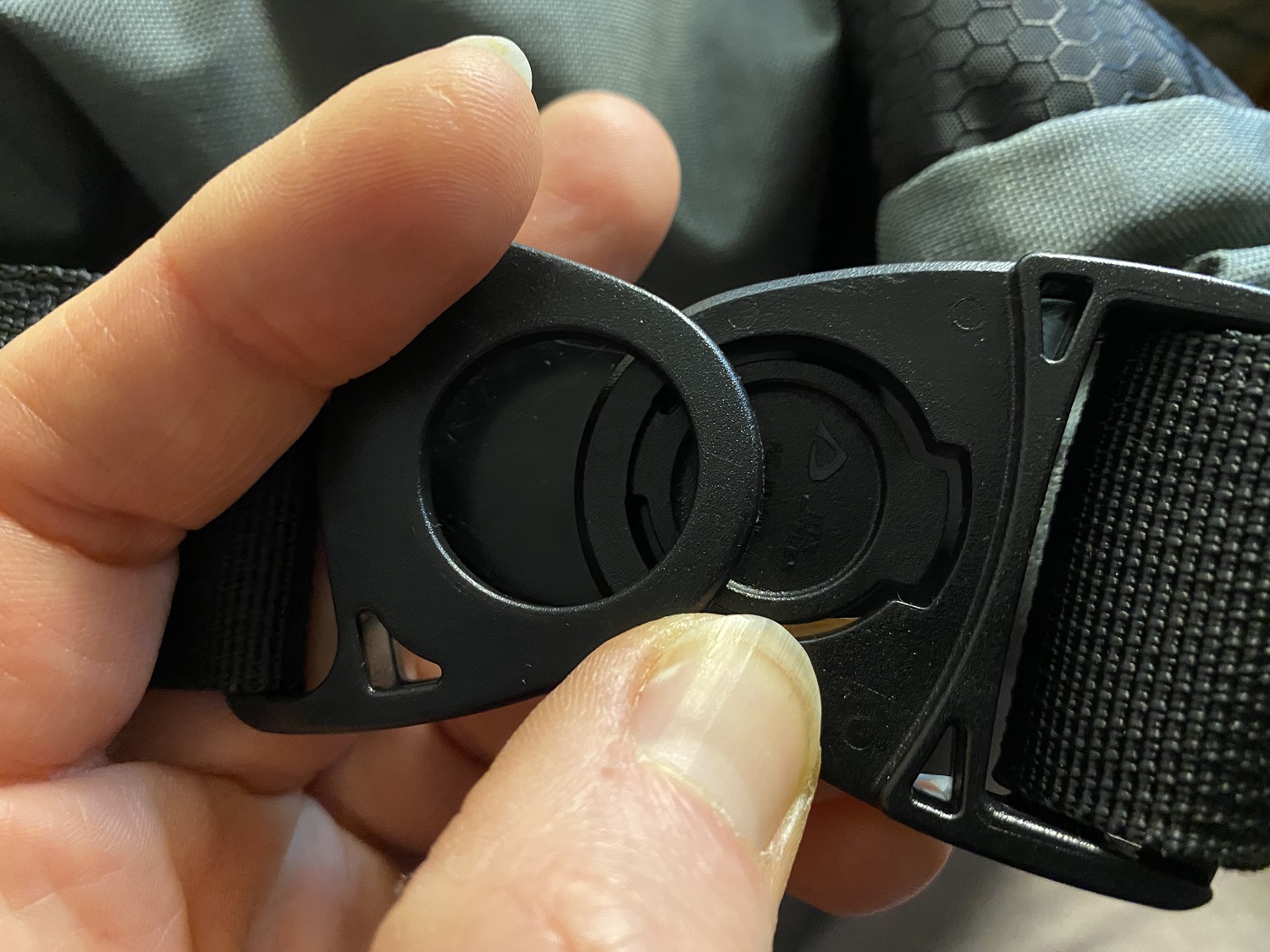
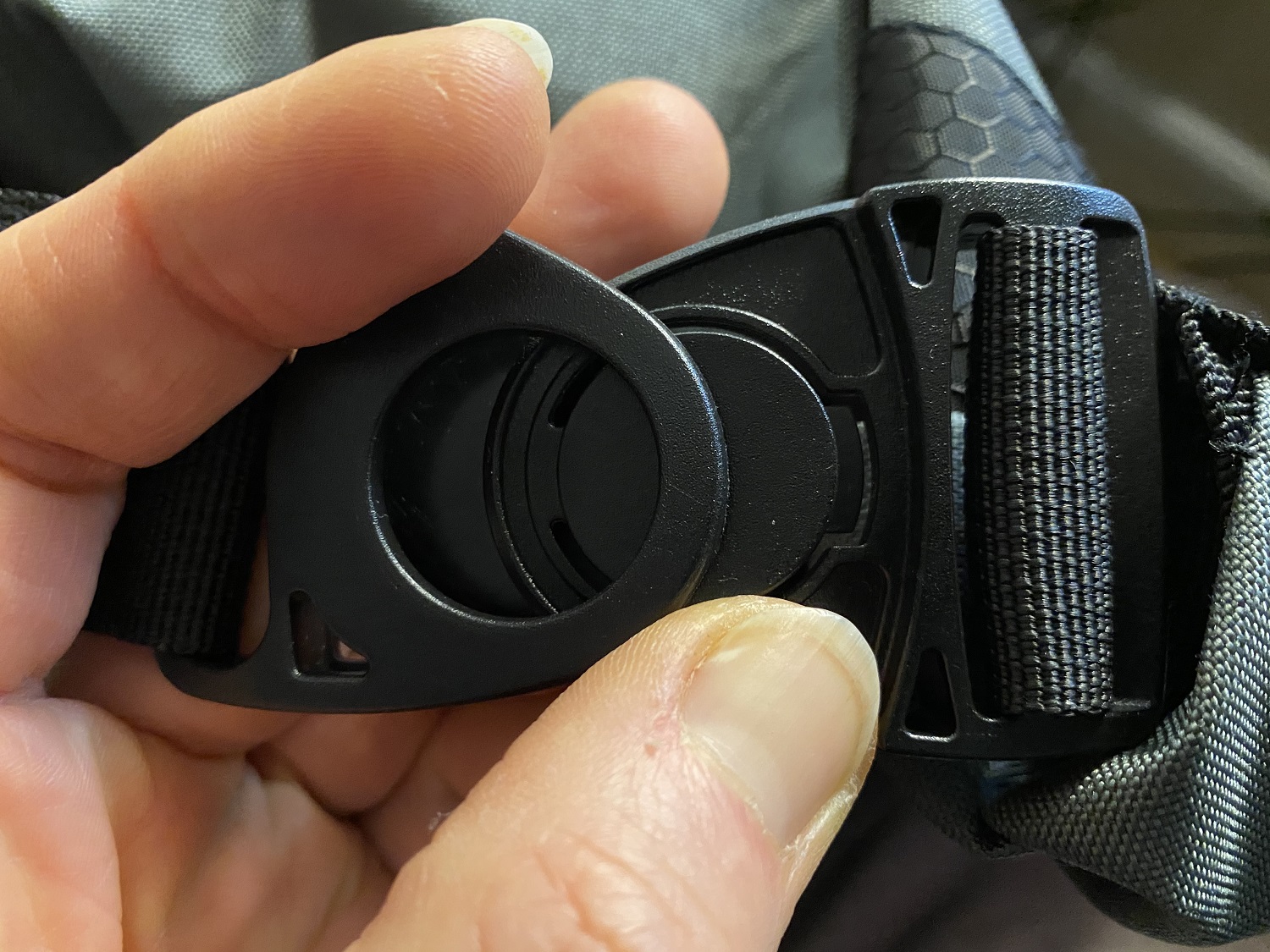
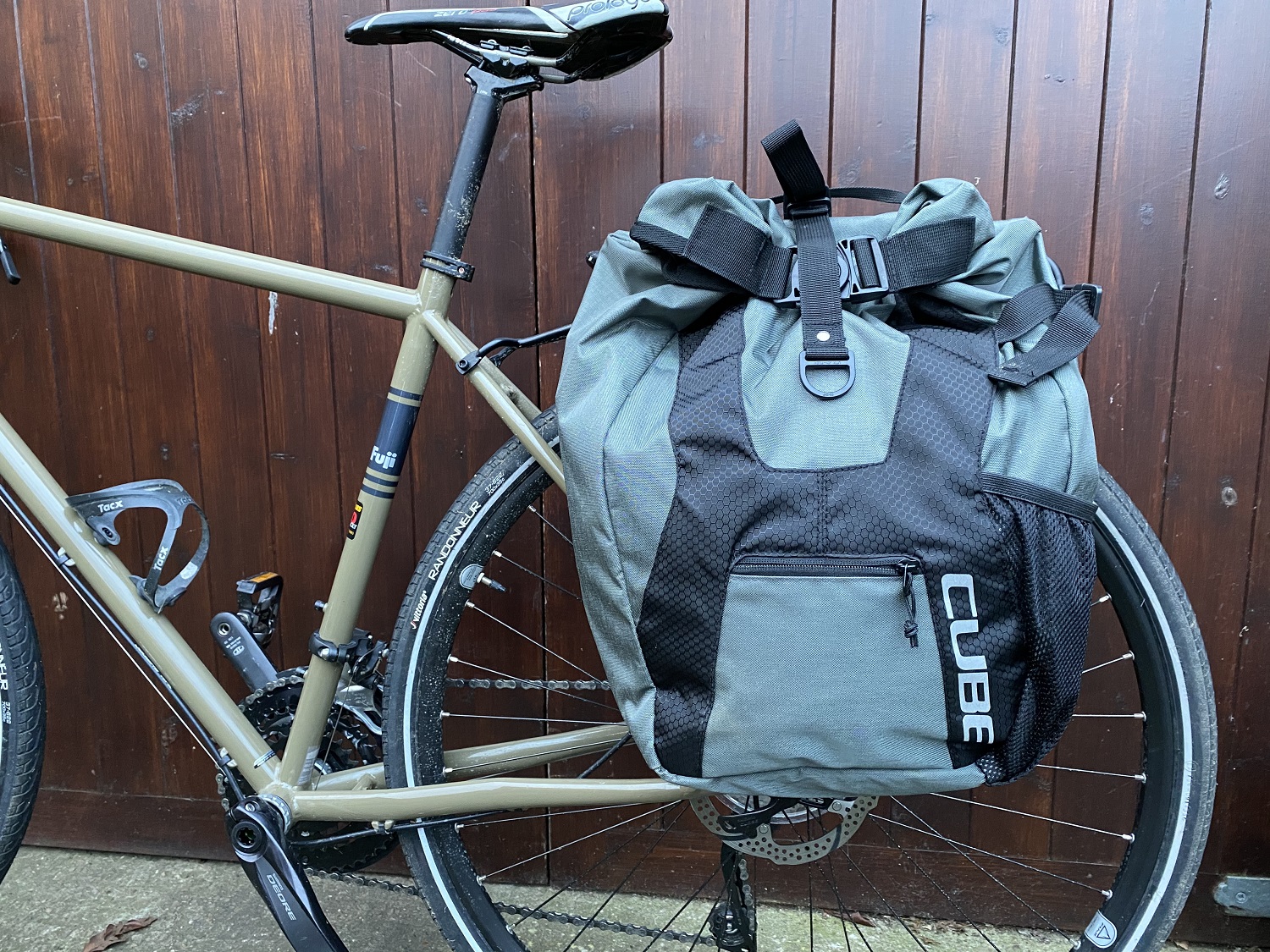
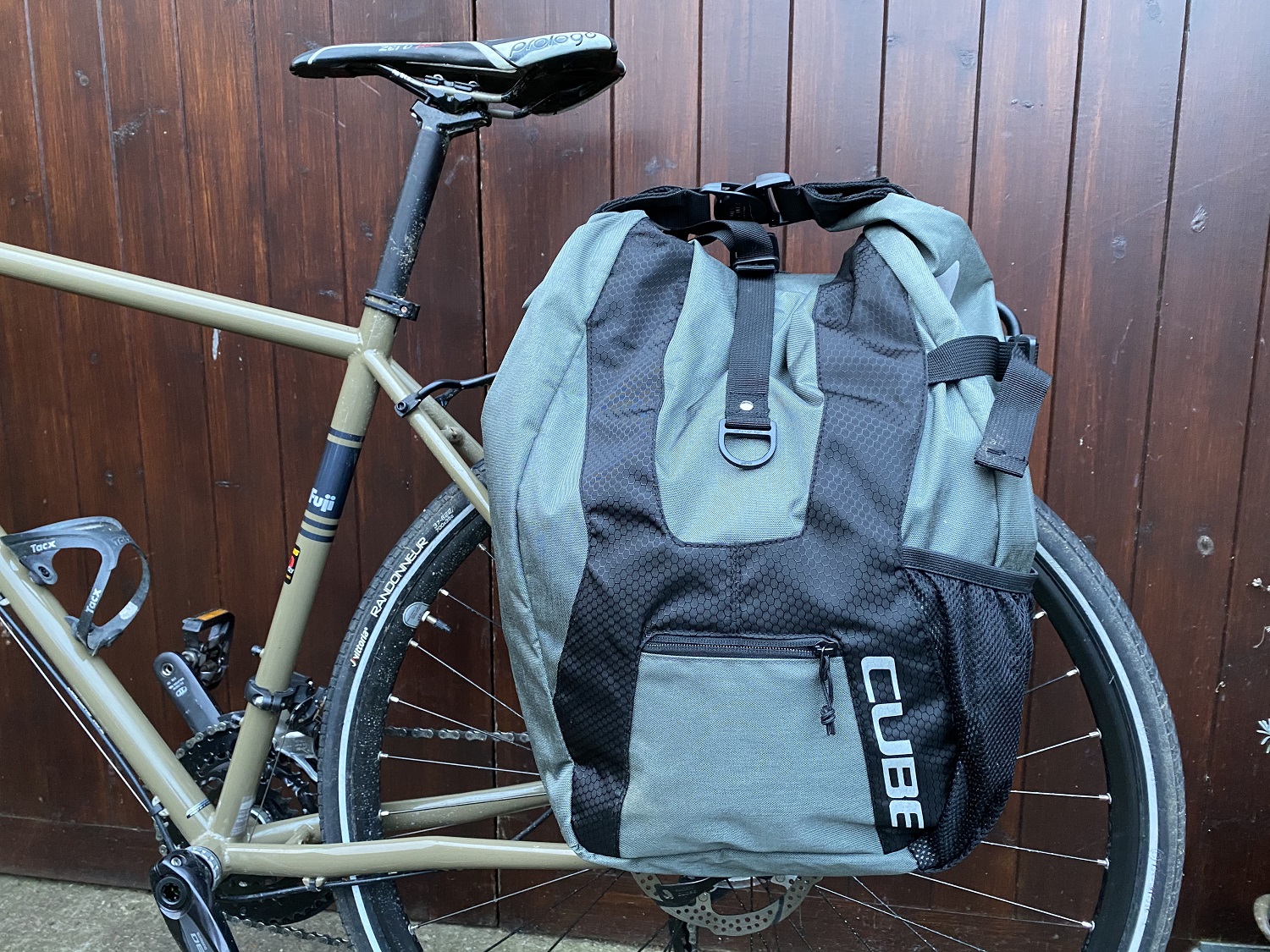
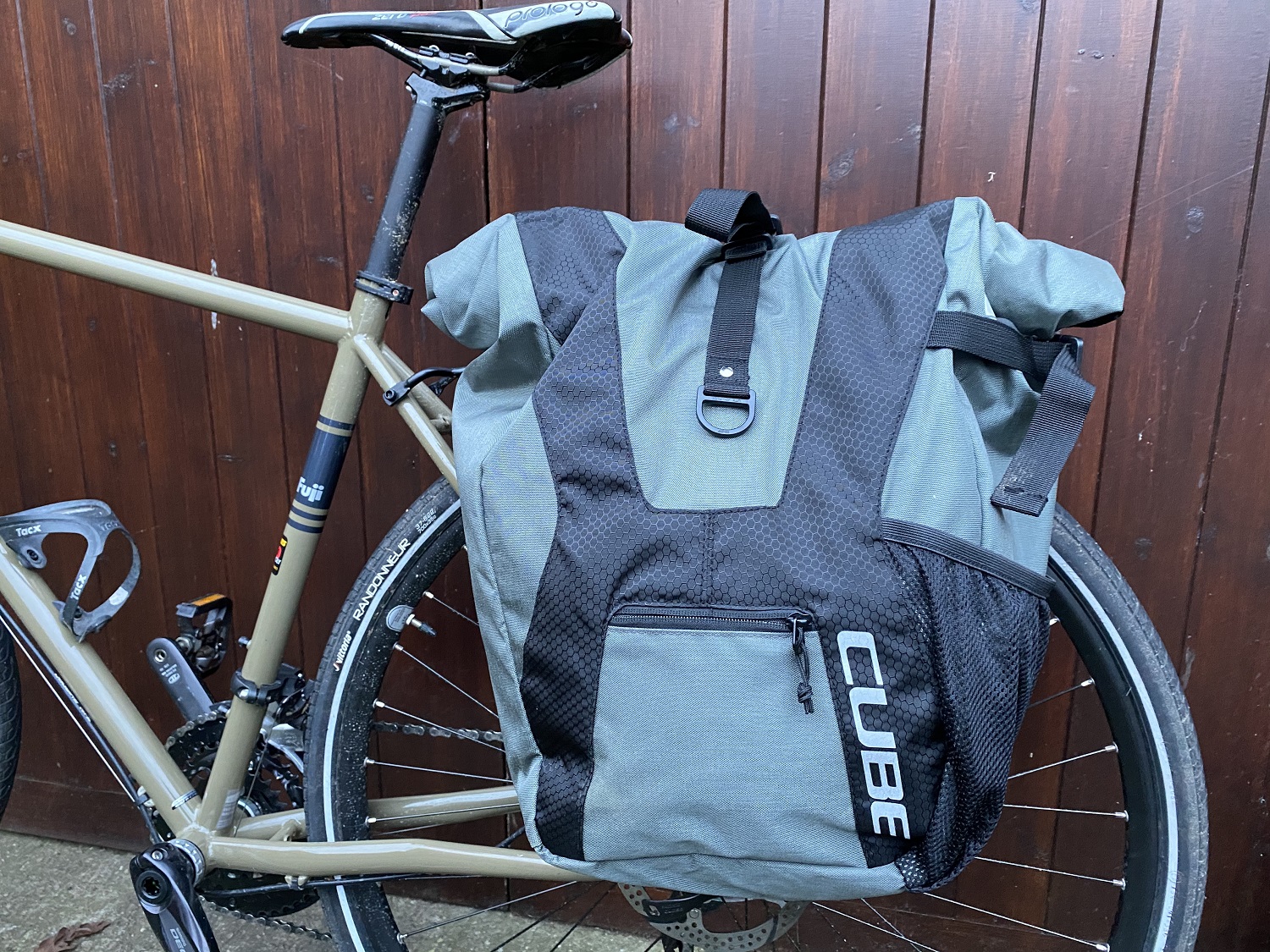
Although the single, central closure is a more ‘conventional’ buckle, I found the female part to be poorly attached. It sits pretty much flush to the pannier, behind the back plate, making it difficult to get any kind of leverage. A minor niggle in the grand scheme of things, perhaps.
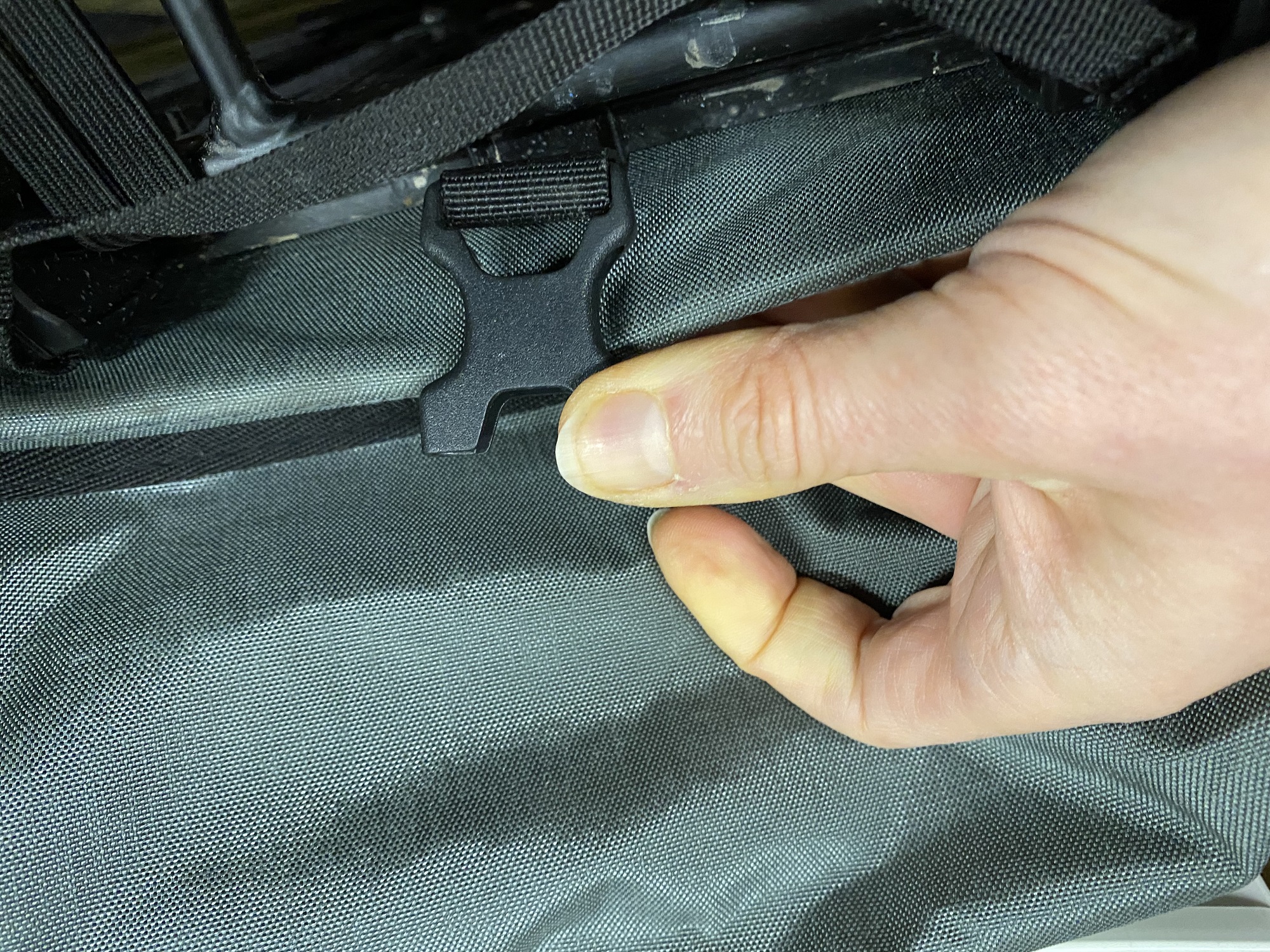
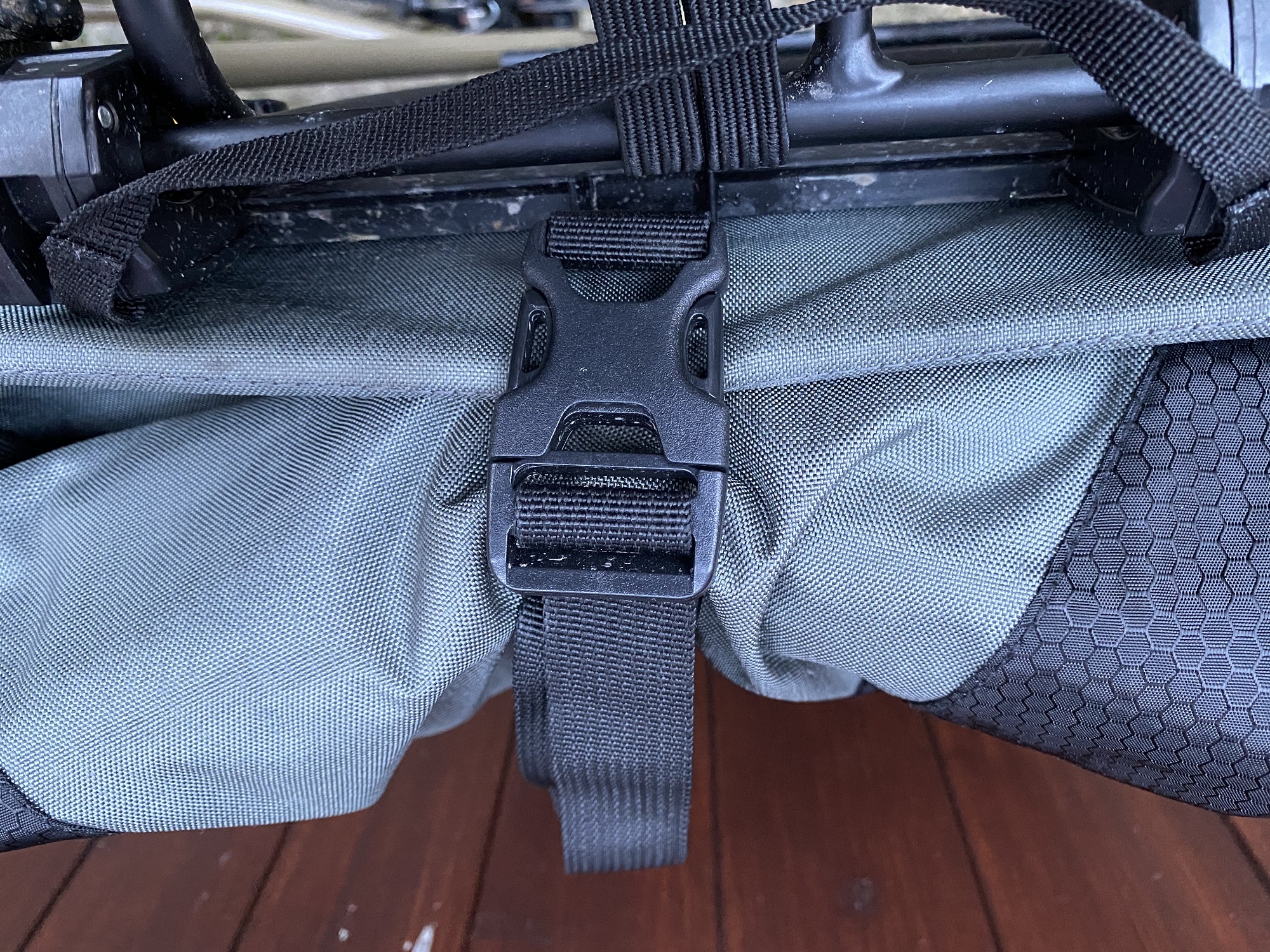
My only other niggle with the panniers relates to the external zip pocket. In short, the opening is not wide enough. The photo shows this well enough. Getting anything more than keys into it, not to mention getting anything out, isn’t easy. On top of this, it isn’t quite deep enough for my cased, (144 x 71.4 x 8.1mm) smart phone. It’s a real shame; I think an external, zipped pocket is well worth having on a general purpose pannier.
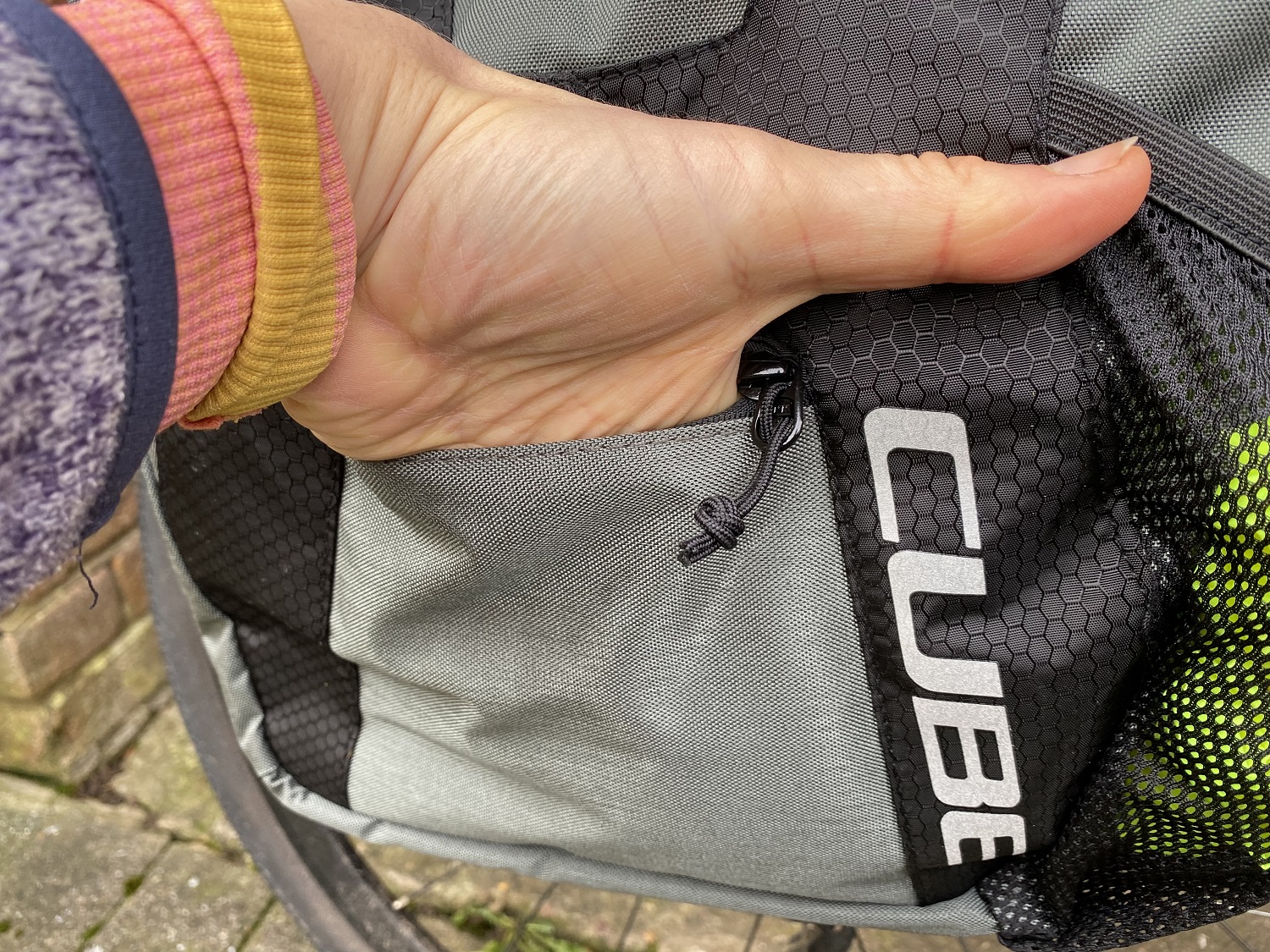
The mesh pouch is handy for items of little value; the top elastic isn’t very tight, so smaller objects could jump out on rough roads. I found it useful for shoving the rain cover into after a shower; it avoided putting it back in the zipped pocket dirty and damp. Since it has a retaining strap with buckle above it, it's possible to use it for larger bottles or tall, narrow objects.
The interior sleeve and pouch both reach down to the same depth. To give an idea, an A4 sheet of paper slides perfectly into the pouch. I could physically fit a 14-inch laptop into the pocket with a few centimetres of it rising above the top of the back plate. I shied away from this though; there’s no padding around the pocket, or pouch, and the back plate is rather flimsy in comparison to some. There’s enough flex in the back plate to make it bow under heavy or bulky loads. Combining it with a rack like Topeak’s Super Uni Tourist is an ideal scenario; it prevents it from flexing backwards, towards the wheel.
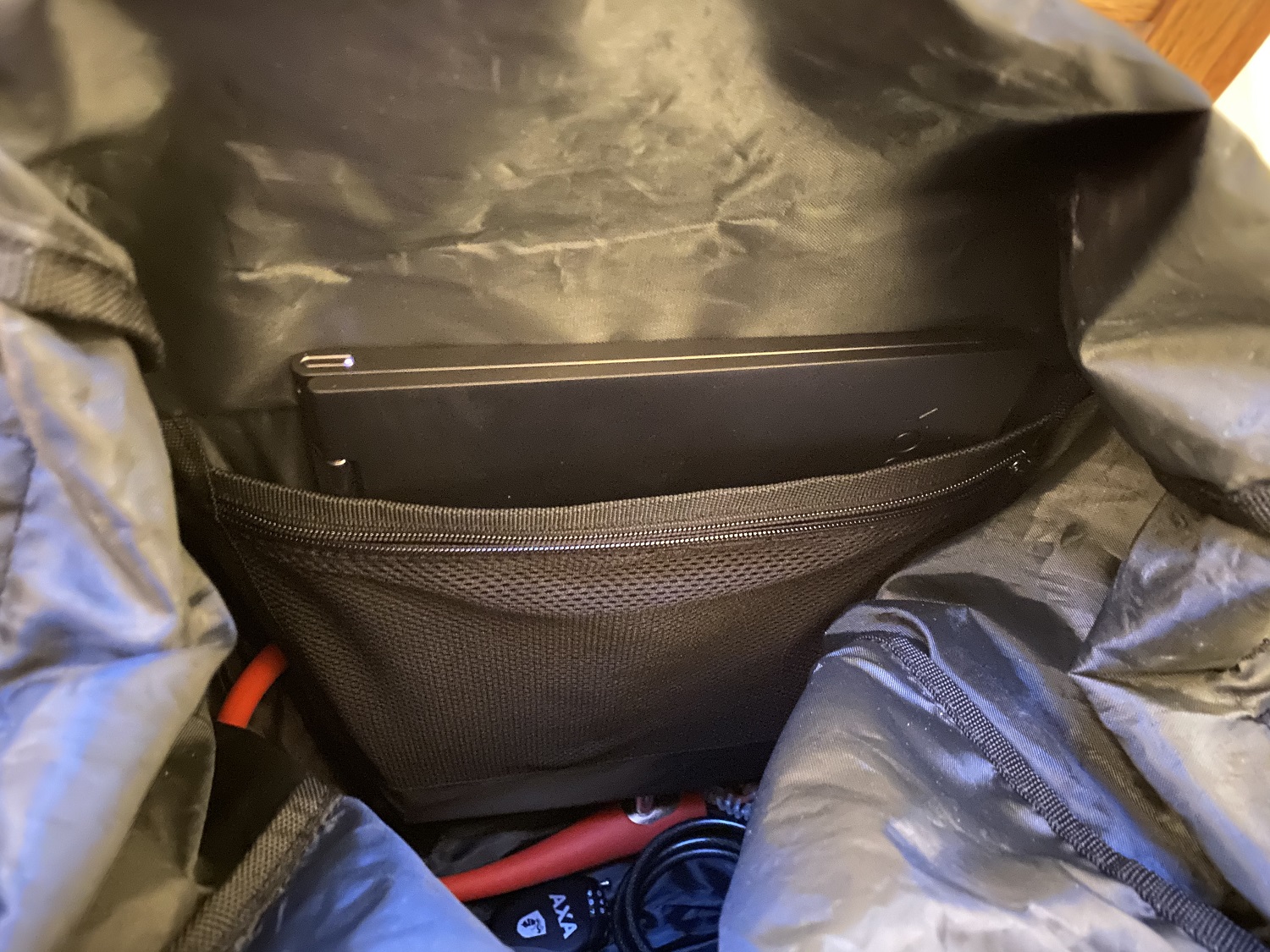
The panniers only come in one colour: antharzit. It looks stylish and doesn’t show up dirt, but it’s hardly going to get you noticed by other road users. The rain covers are ideal for this, providing you can be bothered with the faff every time you access the panniers; they are not attached to the pannier by any kind of cord or toggle. The mesh pocket is a good means of storage; the wind won’t whip them away from you while you are sorting kit.
I’ve had the rain covers out several times during testing and they work sufficiently well for a limited period of time. After about 70 minutes of continual, moderate rain, there were signs of water ingress on the panniers. The first photo below is how they were after a 70 minute outing in Storm Barra, with the rain covers on. It’s this element that would put me off using the Travel Panniers for touring. If the bags become damp, they are going to take much longer to dry than something like Ortlieb’s or Vaude’s bags. In torrential rain, water can also find its way in via the wheel side and pool at the bottom of the rain cover.
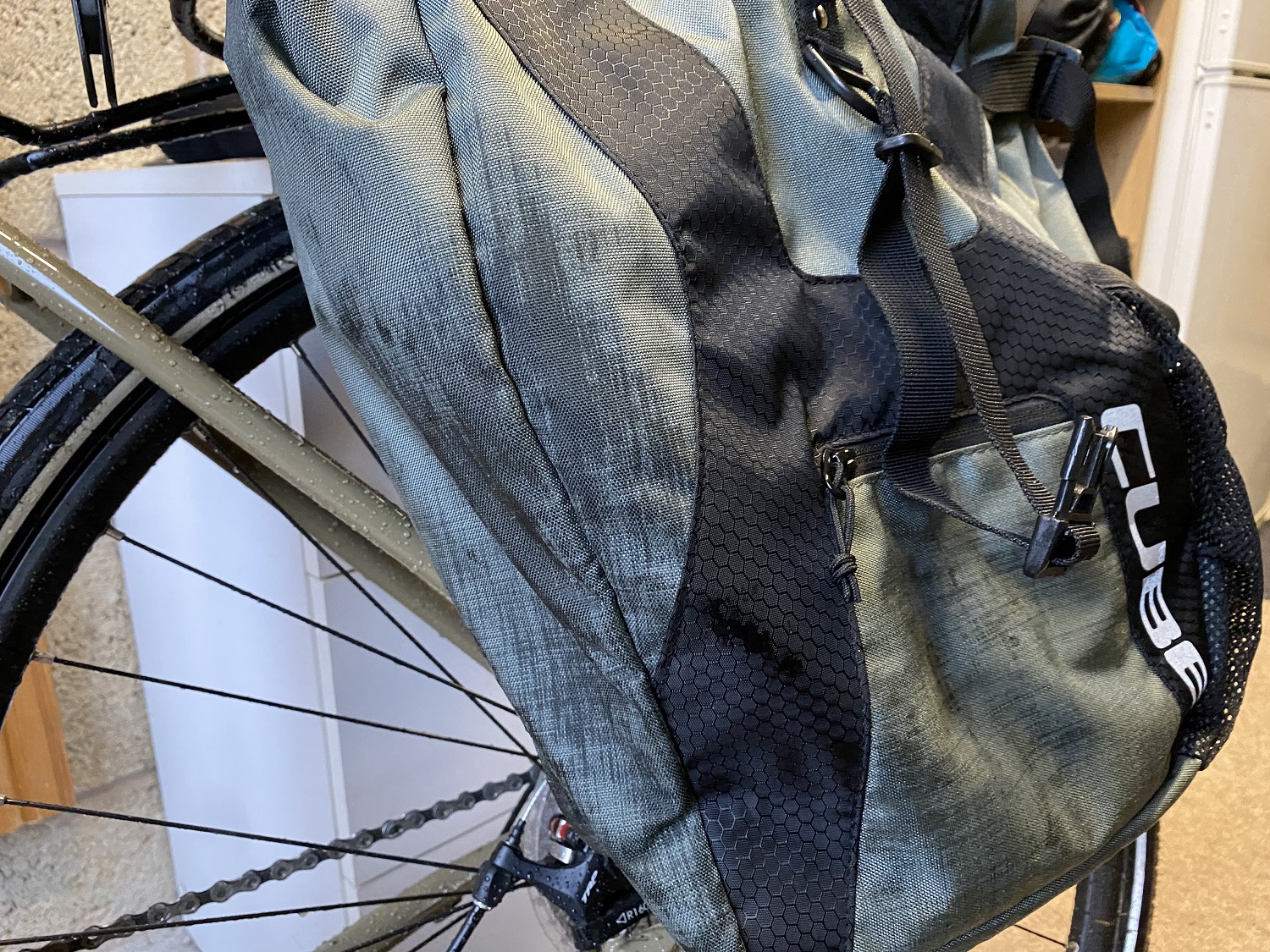
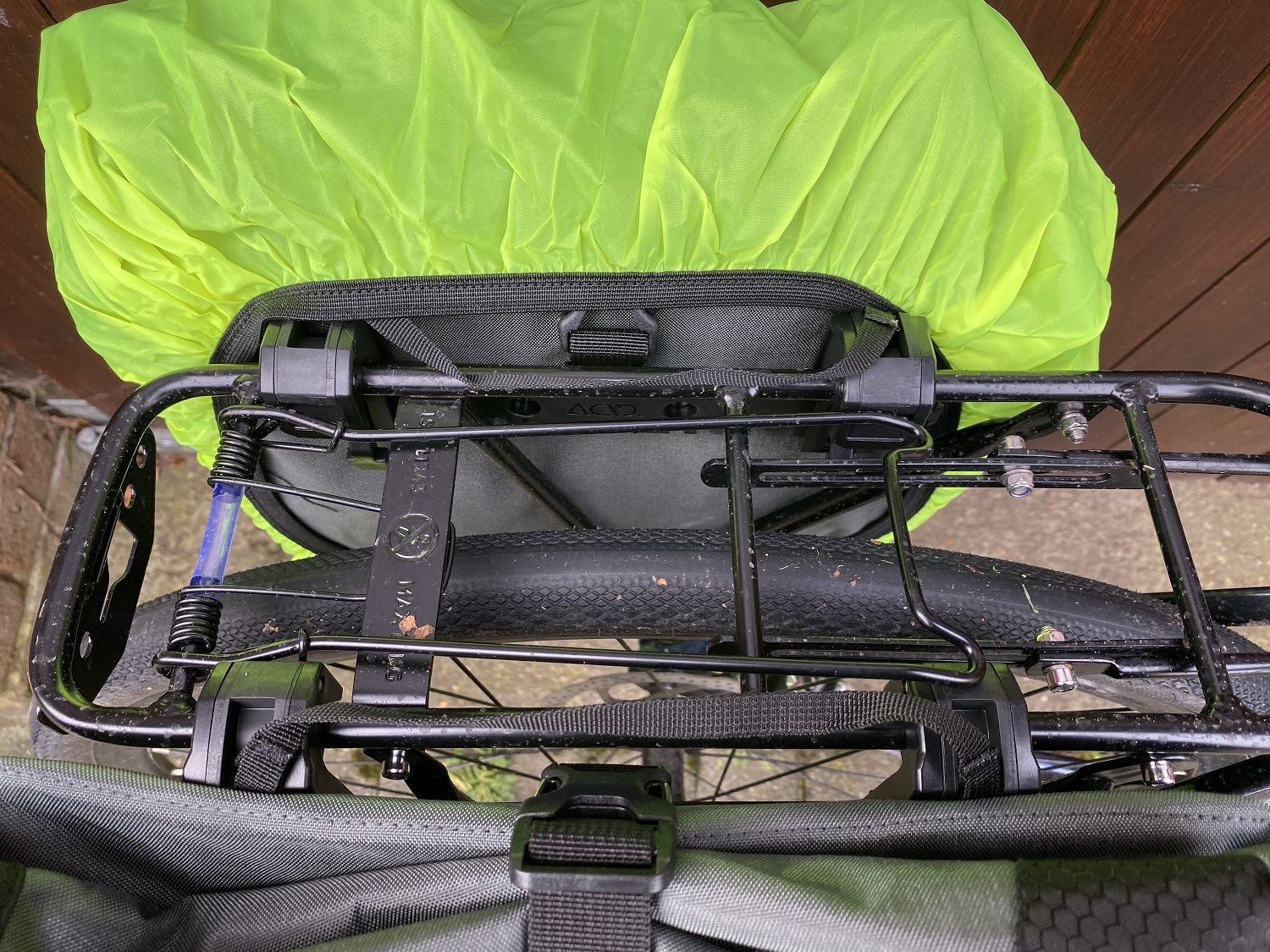
The carry handle is comfortable enough for short distances. However, it’s quite narrow and starts to dig-in if you have a heavy load. I invariably had the shoulder strap attached all the time; it's far more convenient and comfortable.

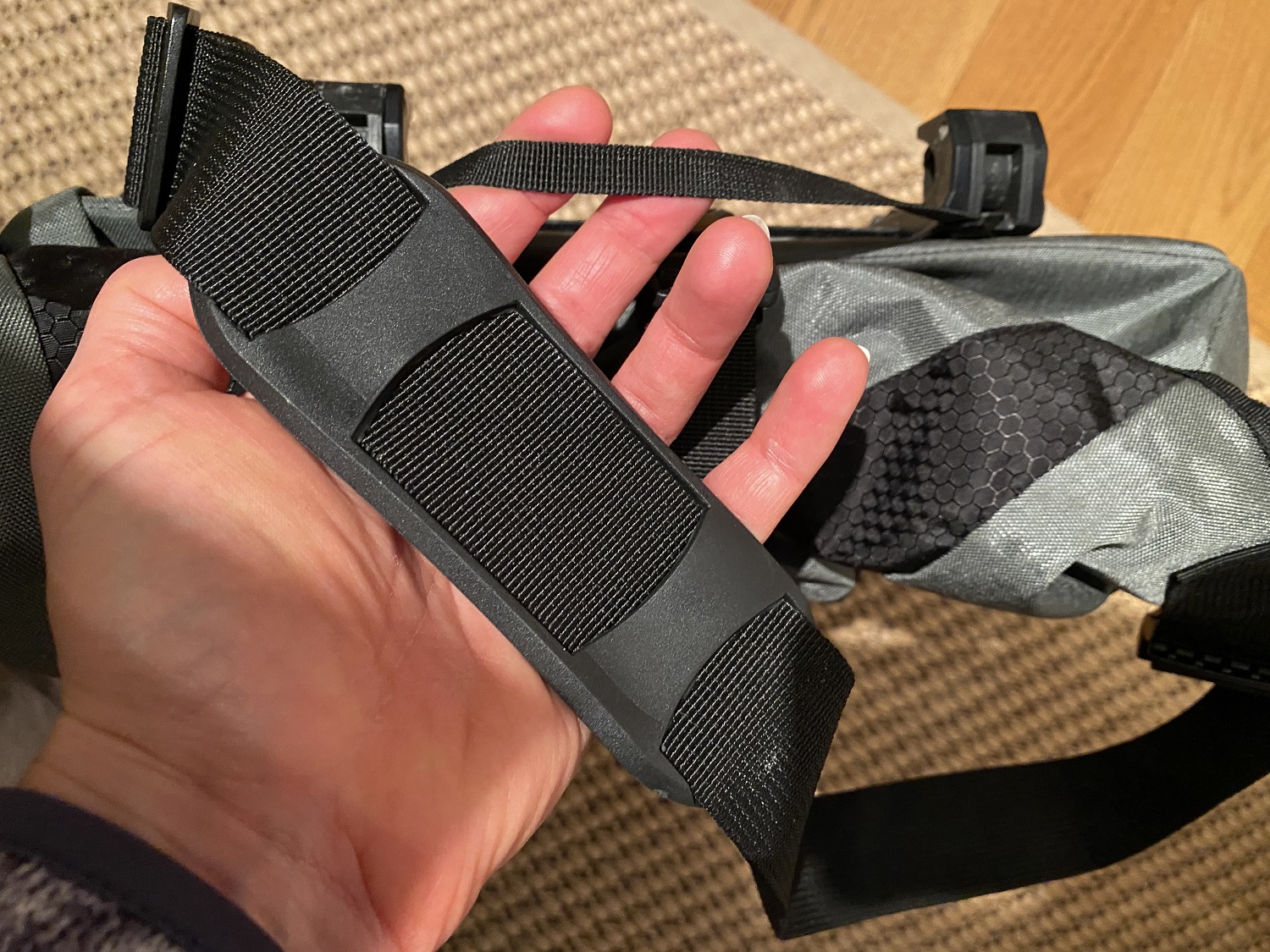
Value
While the RRP is £109.95, these are available for less in various stores. In general this isn’t bad value. They do have one or two shortcomings, but remain functional and practical enough for everyday use. By comparison, Altura’s Heritage Panniers have an RRP of £100. You might have to fork out a similar amount for a single pannier if you want to protect contents with extra padding and a better waterproof rating, Thule’s 17 litre Shield Pannier has an RRP of £90.
Verdict
These are a functional set of panniers that will suit commuters and those relying on the bike more than the car. They lack a little in the durability and weatherproofing stakes, but they more than make-up for this with loads of practical and convenient features.
Specs
- Size: 42 x 30 x 18 cm / 40 litres
- Material: 100% polyester
- Colours: Anthrazit
- Weight: 1600 grams
- Contact: cube.eu

Thank you for reading 20 articles this month* Join now for unlimited access
Enjoy your first month for just £1 / $1 / €1
*Read 5 free articles per month without a subscription

Join now for unlimited access
Try first month for just £1 / $1 / €1
Get The Leadout Newsletter
The latest race content, interviews, features, reviews and expert buying guides, direct to your inbox!
Emma’s first encounters with a bike were in between swimming and running. Soon after competing for GB in the World Age Group Triathlon Championships in Edmonton in 2001 she saw the light and decided to focus on cycling.
With a couple of half decent UK road seasons under her belt, she went out to Belgium to sample the racing there, spending two years with Lotto-Belisol Ladies team, racing alongside the likes of Sara Carrigan, Grace Verbeke, Rochelle Gilmore and Lizzie Deignan. Emma moved from Lotto-Belisol to Dutch team Redsun, working primarily as a domestique for Emma Johansson. When Redsun folded, Emma was offered the opportunity to ride with a newly formed Belgian team and home to the first year senior and budding rider Anna Van Der Breggen.
After retiring, Emma returned to teaching, setting up her own tutoring business. When not coercing kids to do maths, she is invariably out on two wheels. While the road bike remains her true passion, she has also developed an addiction to touring, with destinations including Iceland, Georgia and Albania, to mention just a few. There have also been sightings of Emma off-road, on mountain and gravel bikes… As if all of this isn't enough, she's been working as a freelancer since 2005, testing and reviewing the latest kit and sharing her insight into the sport.
-
 'This is the marriage venue, no?': how one rider ran the whole gamut of hallucinations in a single race
'This is the marriage venue, no?': how one rider ran the whole gamut of hallucinations in a single raceKabir Rachure's first RAAM was a crazy experience in more ways than one, he tells Cycling Weekly's Going Long podcast
By James Shrubsall Published
-
 Full Tour of Britain Women route announced, taking place from North Yorkshire to Glasgow
Full Tour of Britain Women route announced, taking place from North Yorkshire to GlasgowBritish Cycling's Women's WorldTour four-stage race will take place in northern England and Scotland
By Tom Thewlis Published
-
 Positive signs for UK bike industry as Halfords cycling sales grow
Positive signs for UK bike industry as Halfords cycling sales growRetailer admits that the impact of Donald Trump's tariffs remains to be seen
By Tom Thewlis Published